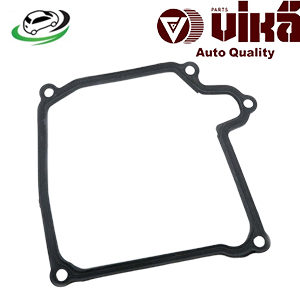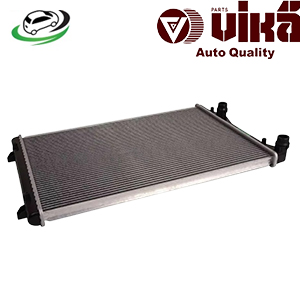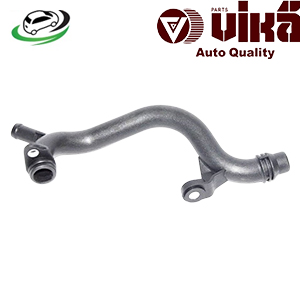-5%
Get AUDI B8 A4 FWD 2.0T/ AUDI B8 A4 Quattro 2.0T/ AUDI Q5 Quattro 2.0T Coolant return pipe 06H121065D
The coolant return pipe is an essential component in a vehicle’s cooling system, responsible for directing the flow of coolant back to the engine or radiator after it has circulated through the engine and absorbed heat. Understanding the functions, importance, maintenance practices, and common issues associated with the coolant return pipe is vital for vehicle owners and automotive professionals alike.
Functions of the Coolant Return Pipe
- Facilitating Coolant Circulation: The primary function of the coolant return pipe is to facilitate the circulation of coolant within the engine cooling system. After the coolant absorbs heat from the engine, it flows through the coolant return pipe back to the radiator or coolant reservoir for re-cooling.
- Maintaining Engine Temperature: By directing the flow of coolant, the return pipe helps maintain optimal engine temperature. Proper cooling prevents overheating, which can cause severe engine damage and reduce overall vehicle performance.
- Supporting System Pressure: The coolant return pipe is designed to handle the pressure generated within the cooling system. It must withstand the forces exerted by the circulating coolant while maintaining a sealed system to prevent leaks.
- Promoting Efficient Heat Exchange: The return pipe plays a crucial role in promoting efficient heat exchange within the cooling system. By ensuring that the heated coolant returns to the radiator, it facilitates the cooling process, allowing the engine to operate at its most efficient temperature.
- Preventing Cavitation: Cavitation is the formation of vapor bubbles in a fluid due to rapid changes in pressure. The coolant return pipe helps prevent cavitation by maintaining a steady flow of coolant back to the radiator, ensuring a constant supply of liquid coolant to the engine.
Importance of the Coolant Return Pipe
- Engine Protection: The coolant return pipe is vital for protecting the engine from overheating. A malfunctioning or damaged return pipe can lead to insufficient coolant flow, resulting in elevated engine temperatures and potential damage.
- System Integrity: The return pipe contributes to the overall integrity of the cooling system. A properly functioning return pipe ensures that coolant circulates effectively, maintaining the system’s pressure and preventing air from entering the system.
- Efficiency and Performance: An efficient cooling system is essential for optimal engine performance. The coolant return pipe ensures that the engine maintains the correct operating temperature, contributing to fuel efficiency and engine longevity.
- Environmental Considerations: A properly functioning coolant return pipe helps prevent coolant leaks, which can lead to environmental contamination. By directing coolant back to the engine or radiator, it minimizes the risk of spills and helps maintain a clean environment.
- Cost-Effective Maintenance: Regular maintenance of the coolant return pipe can prevent more extensive repairs and replacements. By ensuring that the return pipe is in good condition, vehicle owners can save on costly engine repairs related to overheating or coolant leaks.
Common Materials Used for Coolant Return Pipes
- Metal Pipes: Many coolant return pipes are made from metals such as aluminum or stainless steel. Metal pipes are durable, heat-resistant, and capable of withstanding high pressure, making them suitable for high-performance applications.
- Plastic Pipes: Plastic coolant return pipes are commonly used in modern vehicles due to their lightweight and corrosion-resistant properties. They are often designed to handle the thermal expansion associated with temperature fluctuations in the cooling system.
- Rubber Hoses: In some applications, rubber hoses are used as coolant return pipes. These hoses are flexible and can accommodate movement in the engine, but they may require regular inspection and replacement due to wear and exposure to heat and coolant.
Maintenance of the Coolant Return Pipe
- Regular Inspections: Routine inspections of the coolant return pipe should be conducted during regular vehicle maintenance. Look for signs of wear, cracks, leaks, or corrosion that could indicate potential issues.
- Check for Leaks: Periodically check for coolant leaks around the return pipe and connections. Any signs of leaking coolant should be addressed immediately to prevent further damage and overheating.
- Flush the Cooling System: Flushing the cooling system at recommended intervals can help remove debris and contaminants that may accumulate in the return pipe. This practice enhances coolant flow and maintains system efficiency.
- Replace Damaged Components: If the coolant return pipe is found to be damaged or deteriorated, it should be replaced promptly. Ignoring damage can lead to coolant leaks and engine overheating, which may result in costly repairs.
- Monitor Coolant Levels: Regularly check the coolant levels in the reservoir and refill as necessary. Low coolant levels can lead to insufficient flow and overheating, making it essential to maintain appropriate coolant levels in the system.
- Secure Connections: Ensure that all connections to the coolant return pipe are tight and secure. Loose connections can lead to leaks and reduced coolant flow, impacting the cooling system’s effectiveness.
Common Issues Associated with Coolant Return Pipes
- Leaks: Coolant leaks are one of the most common issues associated with coolant return pipes. Leaks can occur due to cracks, corrosion, or loose connections, leading to a drop in coolant levels and potential engine overheating.
- Clogs: Clogs can form within the coolant return pipe due to debris, scale buildup, or corrosion. Clogs restrict coolant flow, resulting in inefficient cooling and potential overheating.
- Deterioration: Over time, coolant return pipes can deteriorate due to exposure to heat, pressure, and corrosive chemicals in the coolant. Deterioration can lead to cracks and leaks, necessitating replacement.
- Air Traps: Air trapped in the coolant return pipe can lead to air pockets, reducing the efficiency of the cooling system. Air traps can prevent proper coolant circulation, leading to overheating and engine damage.
- Improper Installation: If a coolant return pipe is improperly installed or not secured correctly, it can lead to leaks or disconnections. Proper installation and secure connections are essential for ensuring effective operation.
Conclusion
The coolant return pipe is a vital component of a vehicle’s cooling system, facilitating the circulation of coolant and helping maintain optimal engine temperature. Its primary functions include sealing coolant flow, maintaining system pressure, and preventing overheating. Regular maintenance and inspections of the coolant return pipe are crucial for ensuring its integrity and preventing common issues such as leaks and clogs.
By understanding the importance of the coolant return pipe and following best practices for maintenance, vehicle owners can enhance engine performance, extend engine life, and minimize the risk of costly repairs. Proper attention to this component contributes to a reliable cooling system, ensuring that the engine operates efficiently and effectively under varying conditions.
Follow us on Facebook for more parts.




Reviews
Clear filtersThere are no reviews yet.